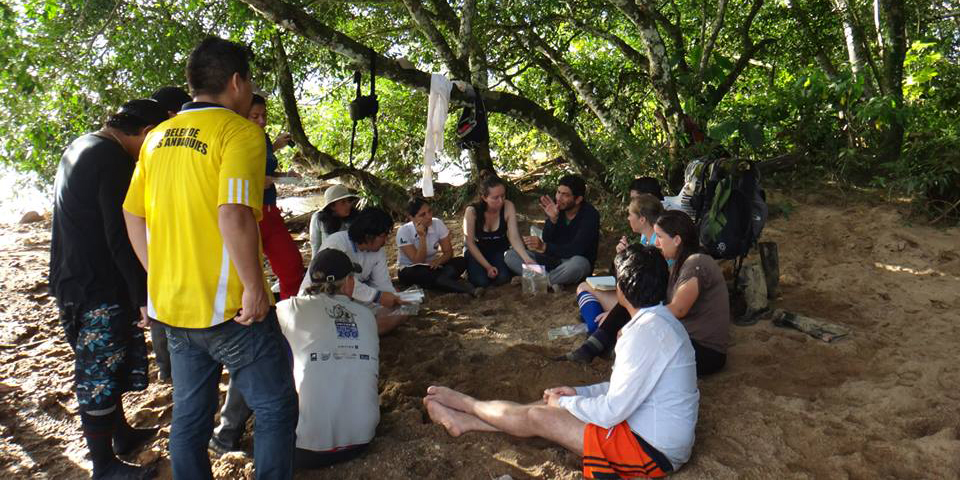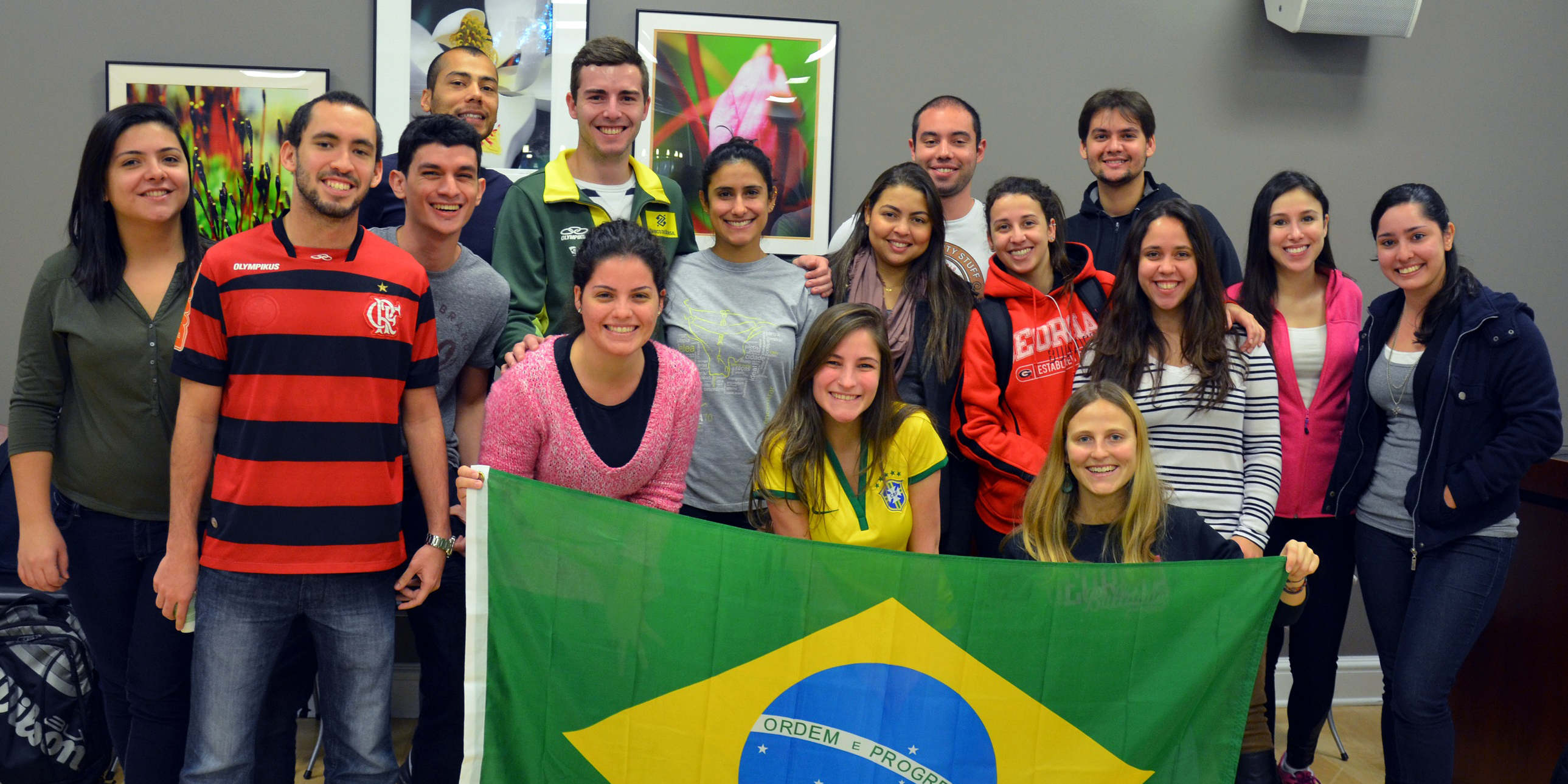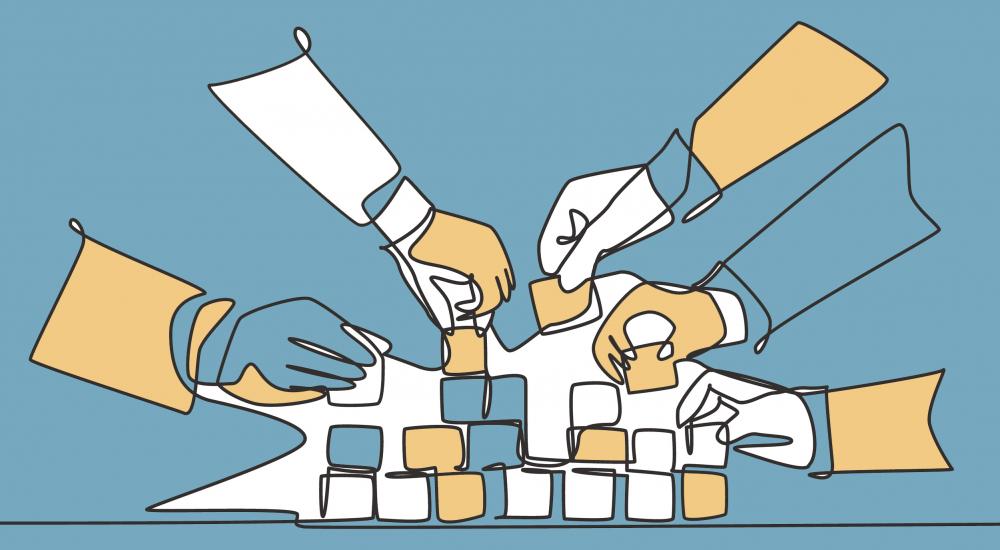Building North-South Bridges Across the Globe
South Africa’s harmful apartheid policies sparked protests on college campuses across the United States during the 1970s and 1980s, as students pressured the U.S. government, corporations, and other institutions to withdraw investments and support from the oppressive regime. At the University of Missouri (UM), protesters took turns living in cardboard shanties—representing the plight of Black South Africans—on the campus’ main quad to bring attention to the issue.
In response to the demonstrations, administrators at UM sought ways to make positive contributions to benefit South Africans suffering under the racist policies. They reached out to leaders at the University of the Western Cape (UWC) in Cape Town, South Africa—an institution the apartheid regime established exclusively for mixed race students—to explore mutual interests.
Discussions between UM and UWC led to the establishment of the University of Missouri South Africa Education Program (UMSAEP) in 1986, “to advance mutual understanding between the institutions’ faculties and foster cooperative teaching, research and service projects,” according to the 2017 UMSAEP Report. The partnership—the first of its kind between a U.S. university and a non-white South African school—connected all four UM campuses and UWC to engage in faculty exchanges, research collaborations, and other mutually beneficial ventures.
Despite being woefully underfunded, “UWC was actually the hotbed of the intellectual anti-apartheid movement in South Africa,” says UMSAEP director Rodney Uphoff, the Elwood Thomas Missouri Endowed Professor Emeritus of Law at UM School of Law. “The program was set up to give faculty members an opportunity to have research or teaching experiences. That not only enhances their own professional development, but it also benefits students at participating institutions by broadening their education.”
There is no magic formula for creating valuable Global North-Global South connections. But the success stories share critical elements
As one of higher education’s oldest and most fruitful Global North-Global South partnerships, UMSAEP is an example of the benefits such collaborations can offer. These connections bring together a wealth of experience and expertise that not only fosters personal development for each participant; they also advance research, enhance student learning, and, ultimately, benefit communities.
There is no magic formula for creating valuable Global North-Global South connections. But the success stories share critical elements: equity and respect among partners; mutually beneficial objectives; and transparency and open communication. The following examples illustrate the different forms that partnerships can take, and lessons learned from those who administer the programs.
University of Missouri and University of Western Cape: Raising the Stature of an Institution Once Downtrodden by Apartheid
During its nearly 40-year existence, UMSAEP has facilitated over 900 faculty exchanges in a wide range of disciplines—from community development, human ecology, and women’s studies to the sciences, nanotechnology, and economics. In the early days of this partnership, these professional connections were particularly critical for UWC faculty, who were somewhat isolated during apartheid.
Funding for UMSAEP initiatives has been provided primarily through the UM system. Even so, Uphoff says UWC leaders have equal input with UM’s 12-member committee in making decisions about disbursement of grant awards.
“Decisions [about which projects to fund] have always been made jointly,” Uphoff says. “And over the years, roughly the same number of people have traveled from UWC to Missouri as have traveled from Missouri to UWC. The program has always been marked by the notion that we have mutual respect.”
UMSAEP opened to student exchanges in 2001. Since then, hundreds of students from both institutions have participated in faculty-led study abroad programs, research experiences, and internships. Uphoff, for example, has been leading a study abroad program for law students that includes a course on the South African constitution and a comparative criminal justice class. He has team taught courses with UWC faculty.
The program also expanded to include the “South African Partnerships Program,” which provides resources for numerous disadvantaged postsecondary institutions in South Africa. These initiatives have supported training or research in areas such as: teaching writing, language, and media literacy, the role of sports in the lives of political prisoners on South Africa’s Robben Island; structural health monitoring; science education; and wildlife management and conservation.
“Decisions [about which projects to fund] have always been made jointly. And over the years, roughly the same number of people have traveled from UWC to Missouri as have traveled from Missouri to UWC. The program has always been marked by the notion that we have mutual respect.” —Rodney Uphoff
The decades-long UM-UWC partnership has been remarkably successful, especially for its contribution to UWC’s rise in stature. Now ranked as one of the top 10 universities in Africa, UWC leads the continent in disciplines such as bioinformatics, biotechnology, mathematics, and science. It is home to the UNESCO Chair in Geohydrology, leading Africa in water resource research and training. Additionally, the World Health Organization (WHO) established three collaborating centers for capacity development, teaching and research in dentistry, pharmacology, and public health at UWC.
“When people travel, it breaks down lots of myths about others, and it gives them a much better appreciation for the fact that people around the world are more alike than they are different,” Uphoff says. “There are certainly cultural differences and historical differences. But people are people, and they have a lot of the same wants and needs. And if you put them together, generally they’re going to find that they get along well.”
Florida International University and Pontificia Universidad Javeriana: Scientific Collaboration for Amazon Conservation
For Florida International University (FIU), establishing partnerships in Colombia makes sense for numerous reasons. First, the Latin American nation is home to one of the highest numbers of FIU alumni outside of the United States, says Elizabeth P. Anderson, an associate professor in FIU’s Department of Earth and Environment. Additionally, Colombia is rich in biodiversity, with world-class institutions of higher education.
“There is a lot that FIU can learn from Colombian universities, and FIU leadership recognizes that,” Anderson says.
In 2012, Anderson helped build “Partners for Conservation in the Colombian Amazon,” a partnership between FIU and the Pontificia Universidad Javeriana (PUJ) that became known as SOCIOS. The collaboration was initiated in response to a U.S. Agency for International Development (USAID) request for proposals seeking to develop a higher education partnership program to train students to respond to future conservation needs in the Colombian Amazon region. The program, co-led by FIU and PUJ, involved other universities in Colombia (Universidad Nacional and Universidad de la Amazonia), along with about 20 government and civil society organizations.
The 5-year SOCIOS project increased scientific knowledge of Amazonian social-ecological systems. About 20 faculty members from the four academic institutions were involved in international exchanges, and funding supported four research working groups addressing conservation challenges. Additionally, 15 graduate students received tuition support; 23 fellowships were awarded to faculty, students, or professionals for Amazonian research; and more than 250 people were trained in field courses, workshops, or diploma programs.
The FIU-PUJ partnership has been ideal because “both institutions have interest in international collaboration and in applied, problem solving science,” Anderson says. “Both also seem to value interdisciplinary training opportunities that go beyond the traditional classroom. And both institutions have strong interest in supporting efforts to protect the Amazon River Basin.”
Juan Ricardo Gómez Serrano, director of PUJ’s Conservation and Use of Biodiversity master’s degree program adds, that FIU faculty bring rich, new perspectives.
“We know that Colombia is very rich in biodiversity and socially complex,” Gómez Serrano says. “But [there’s more than one] way to understand the problems. So, if we establish this type of collaboration, we have a new point of view of the same problems, and we can work in a comparative way. This cooperation from the academic point of view is priceless.”
After the SOCIOS project ended, Anderson and her PUJ colleagues continued applying for grants to support their collaborative efforts. In 2017, they received funding from the MacArthur foundation for Living Andean Rivers, led by FIU, PUJ, and the Universidad San Francisco de Quito in Ecuador. This effort offered spaces for collaborative scientific synthesis on tropical Andean rivers, and supported a diploma program on Andean rivers organized and administered by PUJ. This program will wrap up at the end of 2022.
“We used the partnership between FIU-PUJ to then convene collaborators from other Andean Amazon countries: Ecuador, Peru, and Bolivia,” Anderson says. “Its primary objective has been to herald the importance of rivers as objects of conservation and to offer regional perspectives on the ecology, conservation, and management of the Andean headwaters of the Amazon.”
“[With] this type of collaboration, we have a new point of view of the same problems, and we can work in a comparative way. This cooperation from the academic point of view is priceless.” —Juan Ricardo Gómez Serrano
For Goméz Serrano, the keys to a successful partnership with FIU has been transparency and mutual respect. The collaborations are formalized in a memorandum of understanding to outline objectives, funding sources, participant responsibilities, expectations and more.
“The people will be working together, so that's one of the key elements that we always define at first,” Gómez Serrano says. “Another key element for making this a nice working relationship between the two universities is the horizontal way that we work together, with ownership and respect [for all partners]. We acknowledge the differences that we have, but also the things that every partner can give to the relationship. This is a very horizontal way of working. We discuss at first everything, so it's completely transparent—the funding, the, the resources, the commitments, everything. We put it really clear from the beginning so nobody's imposing anything to the other one. We are going to be equals in making decisions and are considered peers.”
University of Georgia, Universidade Federal de São João del-Rei, and the Language Flagship: Cultivating Proficiency in Portuguese
A partnership between the University of Georgia (UGA) and Brazil’s Universidade Federal de São João del-Rei (UFSJ) grew out of a vision to grow and diversify UGA’s Portuguese language program.
As the native language of nearly 236 million people throughout the world, Portuguese is considered a critical language by the U.S. Department of Defense. The federal agency’s Language Flagship—an initiative of the Defense Language and National Security Education Office—strives to form global professionals by growing interest and proficiency in Portuguese and other critical languages.
In 2011, UGA became the home of the Portuguese Flagship Program (PFP), the first of its kind. The program seeks to enroll undergraduate students committed to attaining the highest levels of Portuguese proficiency and applying those skills in professional contexts, according to the program’s website.
“Portuguese is one of the critical languages, and that's the reason we received the grant from the federal government” to launch this program, says Bruno Sales, PFP assistant director. “There's just not enough people graduating from college with a functional and professional level proficiency in Portuguese.”
Ideally, students join PFP during their freshman year, and the program is designed to complement any major area of study. Participating students can be beginner Portuguese speakers, who are expected to take regular skill assessments. Other requirements include weekly tutoring sessions with native or near-native Portuguese speakers, attendance at PFP-sponsored cultural events, and completion of a capstone year studying at UFSJ and a semester-long internship in Brazil. At UFSJ, students take academic major courses fully immersed in Portuguese.
“Students are expected to progress and to be committed to language learning in Portuguese,” Sales says. “This is a proficiency-based curriculum, so we’re constantly checking the students’ progress, both in and outside of the classroom.”
For USFJ, the partnership provides an opportunity to internationalize the campus community. USFJ students also may study at UGA.
“Picking the right partner and also having a good symbiotic working relationship is critical. It’s about having the right people in place—people that you can trust, people that care about the program and that care for the students as much as we do.” —Bruno Sales
“The most fun [part of this experience] to watch is to see the students grow and mature, and have these intercultural experiences,” Sales says. “They come back to the United States with lots of memories and stories to tell. They become more well-rounded individuals. And the most obvious change is the fact that when you first meet them, they don't speak Portuguese at all, and 4 years later they are speaking Portuguese almost like native speakers at times. I definitely know students that have had their careers move forward in part due to their experiences in Brazil.”
The PFP has increased enrollment in UGA’s Portuguese program, which has allowed the department to expand curriculum and the faculty. For institutions wanting to establish Global North-Global South collaborations, Sales recommends finding a partner with a shared vision and collaborative approach.
“Picking the right partner and also having a good symbiotic working relationship is critical,” Sales says. “It’s about having the right people in place—people that you can trust, people that care about the program and that care for the students as much as we do. You want to work with folks that are competent and are committed to the success of the program and to the students.”
What Can Be Gained from Global North-Global South Partnerships?
There’s no single solution for creating a Global North-Global South partnership, and creativity is key. As these examples have shown, the benefits are worth the effort: Bridging connections across the globe can enhance faculty research and enrich student experiences at both partner institutions.
“Institutions of the Global South have a tremendous amount of knowledge, experience, and innovation to offer the world,” FIU’s Anderson says. “That knowledge sometimes may look different than what students and faculty at an institution in the Global North are accustomed to; that is precisely one of the reasons why there’s so much to learn from the Global South and what makes these kinds of partnerships essential. If we want educational and research experiences to be transformative, we need to look to new models and partner with institutions and colleagues that have diverse experiences and interests.” •
NAFSA Resources
About International Educator
International Educator is NAFSA’s flagship publication and has been published continually since 1990. As a record of the association and the field of international education, IE includes articles on a variety of topics, trends, and issues facing NAFSA members and their work.
From in-depth features to interviews with thought leaders and columns tailored to NAFSA’s knowledge communities, IE provides must-read context and analysis to those working around the globe to advance international education and exchange.
About NAFSA
NAFSA: Association of International Educators is the world's largest nonprofit association dedicated to international education and exchange. NAFSA serves the needs of more than 10,000 members and international educators worldwide at more than 3,500 institutions, in over 150 countries.
NAFSA membership provides you with unmatched access to best-in-class programs, critical updates, and resources to professionalize your practice. Members gain unrivaled opportunities to partner with experienced international education leaders.

















